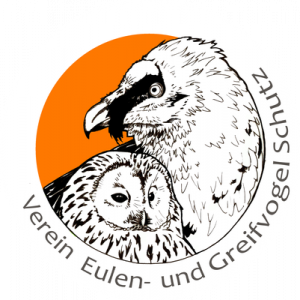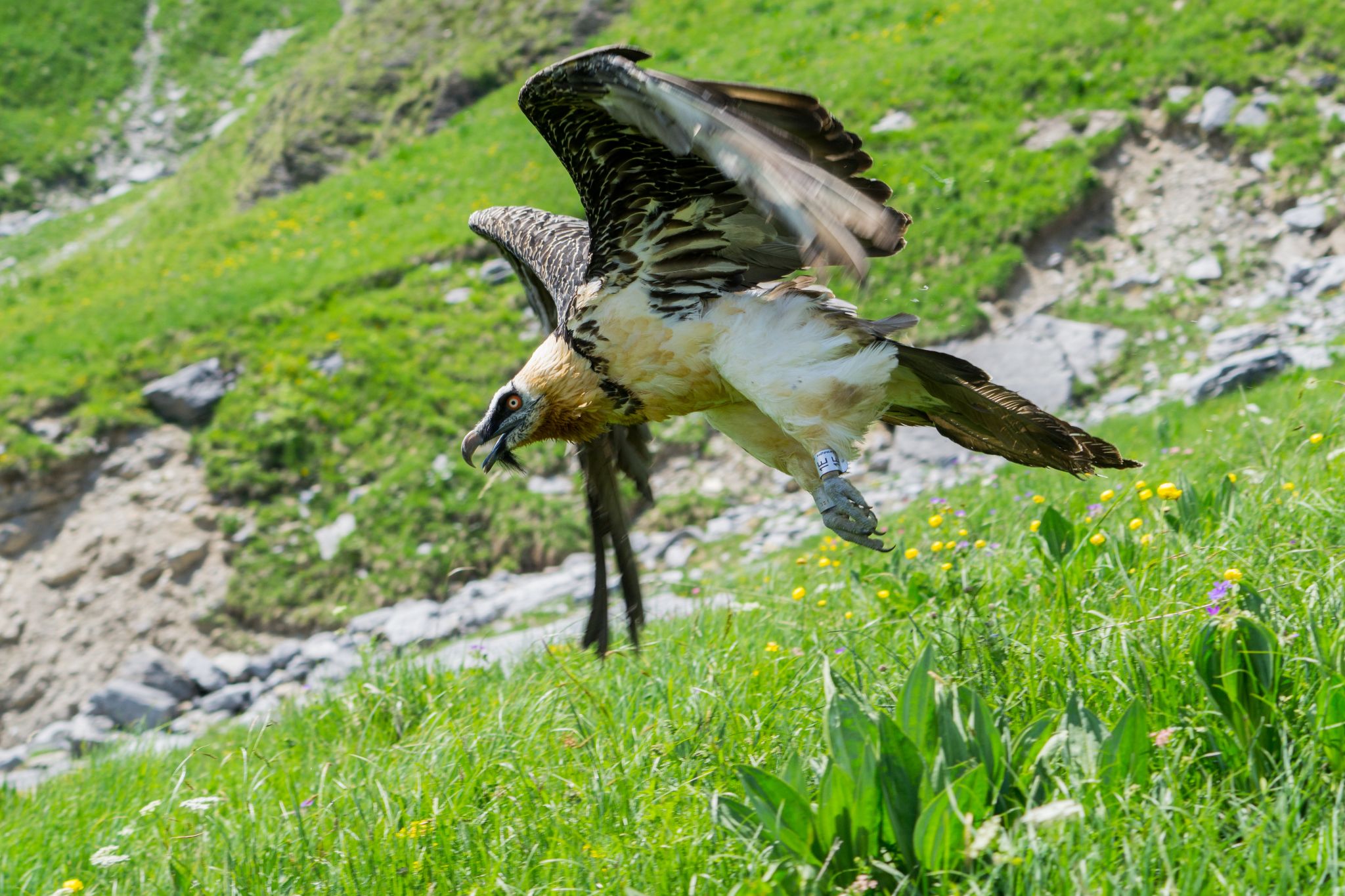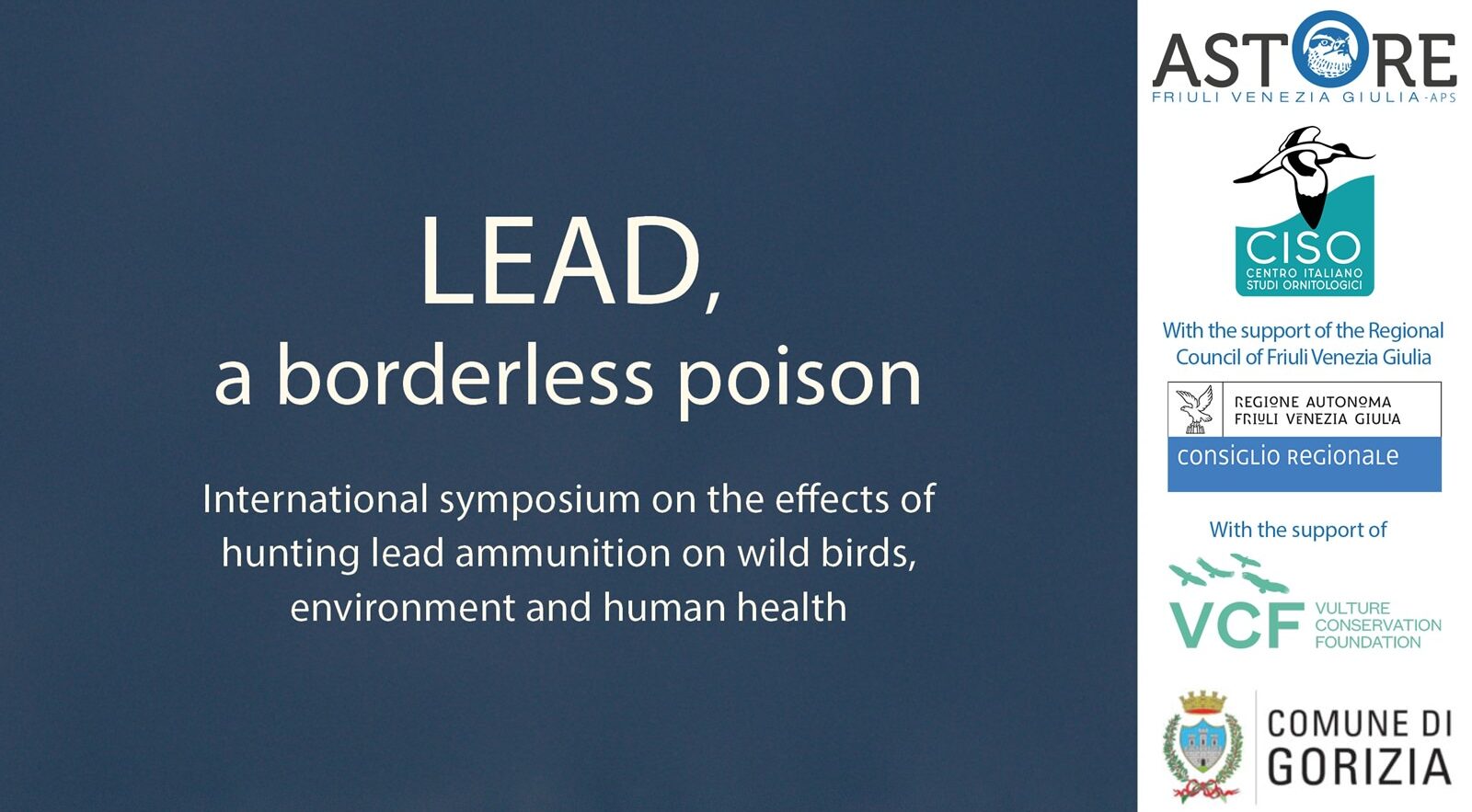On the rugged cliffs of the Sierra Nevada, three young Bearded Vultures—Poqueira, Polarda, and Aznaitín—stretch their wings in the Andalusian sun. Recently released into the wild, these three females mark a significant milestone—the 29th year since the Bearded Vulture reintroduction programme in Andalusia started.
Their names, chosen from iconic natural landmarks in Granada, Almería and Jaén, reflect a deepening connection between the species and the Andalusian landscape—a bond built through decades of collaboration, scientific dedication, and community support.

The international trio from Spain, Austria and Germany
On 9 June 2025, the Junta de Andalucía and the Vulture Conservation Foundation (VCF), together with partners, launched the 19th annual Bearded Vulture (Gypeatus Barbatus) release. The release of Poqueira, Polarda and Aznaitín in Sierra Nevada marked not only the beginning of a new breeding season, but also the 10th anniversary of the first wild-hatched chick, Esperanza, from reintroduced parents in the region.
Hatched in March 2025 at three different centres of the Bearded Vulture EEP captive breeding network — the Bearded Vulture Specialised Breeding Unit Vallcalent (Spain), Tierpark Berlin (Germany), and Richard Faust Zentrum (Austria) — the three chicks represent international collaboration for the species’ conservation.
During the release event, the chicks were placed in cliffside artificial nests at an altitude of 2,000 metres near Monachil and Dílar. There, they will be raised without any human contact—an approach designed to help them bond with the release site, imprint on their natural environment, and eventually return to breed as adults

Expanding to a new release site
Since the first reintroductions, the success has been steady and 2024 marked a milestone with a record number of breeding pairs. Today, there are several known breeding territories, including Cazorla, Segura, Las Villas, Castril, and Sierra Nevada.
The 2024 expansion into a new release site at Sierra Nevada proved immediately promising, with 10 individuals observed soaring over the high peaks within the last year. Now, the momentum continues with plans to establish another new release site in the Sierra de Grazalema Natural Park in Cádiz—the southernmost Bearded Vulture reintroduction site in the European Union.
This move could play a pivotal role in connecting European and North African populations, bolstering genetic diversity and resilience. Grazalema, which spans over 53,000 hectares across Cádiz and Malaga, offers ideal conditions: rugged mountain ecosystems, strong interconnectivity with nearby ranges, a stable supply of wild ungulates and scavenger species, and deep-rooted local support for conservation. Declared Andalusia’s first natural park in 1985, the area is also home to the endemic Spanish fir (Abies pinsapo) and remarkable biodiversity.
Guadalentín: One of the Europe’s most important captive-breeding centres
At the heart of this conservation success is the Bearded Vulture Breeding Centre Guadalentín, managed by the VCF in collaboration with the Junta de Andalucía. Located at 1,300 metres in the Cazorla Natural Park, the centre is a key facility within the European Bearded Vulture Captive Breeding Network (EEP).
Since its foundation, Guadalentín has produced 128 chicks, with 90 hatched in the last decade alone. Its innovative double adoption methods allow it to raise chicks from other centers, boosting survival rates and overall genetic health.
Conservation progress needs continuous protection
While the reintroduction programme in Andalusia has achieved remarkable success, several threats continue to jeopardise the long-term survival of the Bearded Vulture. Although the species is no longer at risk from direct persecution, other dangers persist. Poisoned bait remains one of the leading causes of mortality, alongside electrocution from power lines and a declining availability of safe food sources.
The pioneering work of Junta de Andalucía and VCF through Wildlife Crime Academy has made significant strides in terms of wildlife crime investigation and prosecution, but sustained vigilance, public awareness, and strong enforcement are essential to safeguard the progress made so far.
Success through collaboration
The Andalusian reintroduction programme is not an isolated effort. It relies on cross-border collaboration with regions such as Aragon and Catalonia, and with specialized European breeding centers.
This successful release was made possible through the collaboration of many partners, including Junta de Andalucia, VCF, environmental agents, and local stakeholders. It was also attended by key officials from the Ministry of Sustainability and Environment, Sierra Nevada Park staff, the Andalusian Agency for the Environment and Water (AMAYA), and conservation programme coordinators.
As Poqueira, Polarda and Aznaitín settle into their new mountain home, they carry with them the legacy of decades of conservation work—and the hope that one day, they too will raise chicks in the wild in Andalusia.








